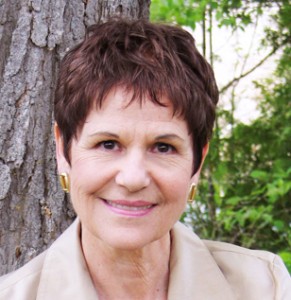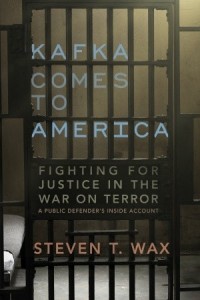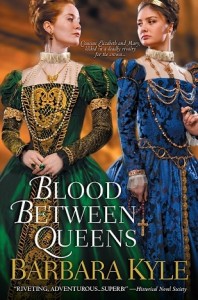 It is my pleasure to introduce the skilled storyteller Barbara Kyle, writer of “The Thornleigh Saga” series, with whom I am honored to be co-leading the week-long 2014 Writing & Yoga Workshop in Brazil. One of the things I love about Barbara’s books is the quality of the writing: she has an extremely broad descriptive vocabulary, making her novels a sheer pleasure to read. Her dialogue blows me away in its originality and cleverness, along with her ability to bring the Tudor time period into full life.
It is my pleasure to introduce the skilled storyteller Barbara Kyle, writer of “The Thornleigh Saga” series, with whom I am honored to be co-leading the week-long 2014 Writing & Yoga Workshop in Brazil. One of the things I love about Barbara’s books is the quality of the writing: she has an extremely broad descriptive vocabulary, making her novels a sheer pleasure to read. Her dialogue blows me away in its originality and cleverness, along with her ability to bring the Tudor time period into full life.
Barbara: Thanks for the invitation, Stephanie. It’s a pleasure to reach out to your readers.
Q: How long have you been a novelist and how did you get started writing?
My first novel was published by Penguin in 1994 so it’s been twenty-one years. Since then I’ve had eight more books published, including three thrillers for Warner Books that I wrote under a male pseudonym (Stephen Kyle) and five historical novels, my Tudor-era “Thornleigh” series, for Kensington.
I started the way most writers do, with short stories. They were pretty awful, full of high-flown language and no point! But I learn quickly, and after a year or so I wrote a short story that won a contest. It wasn’t a exalted contest, just one run by the library association in my county, but it meant the world to me, that affirmation that makes you feel, Yes, I’m a writer.
Q: Would you please share with us information about your latest release: BLOOD BETWEEN QUEENS?
With pleasure. BLOOD BETWEEN QUEENS is my fifth “Thornleigh” novel, a saga that follows the rise of a middle-class English family through three turbulent Tudor reigns.
The story begins when Mary Queen of Scots flees to England to escape her enemies and throws herself on the mercy of her cousin, Queen Elizabeth. Mary, however, has set her sights on the Elizabeth’s throne, and Elizabeth enlists her most trusted subjects to protect it. Justine Thornleigh is delighting in the thrill of Elizabeth’s visit to her family’s estate when the festivities are cut short by Mary’s arrival. To Justine’s surprise, the Thornleighs appoint her to serve as a spy in Mary’s court. But Justine comes to sympathize with Mary, and when Elizabeth holds Mary under house arrest and launches an inquiry into the accusations that she murdered her husband, the crisis splits the Thornleigh family apart.
Like many history lovers I’m fascinated by the deadly rivalry between the two cousin-queens. When Mary arrived in England she could never have suspected that Elizabeth would keep her under house arrest for the next nineteen years, and finally, after Mary’s incessant plotting for Elizabeth’s crown, execute her. For over four hundred years this story has enthralled the world. I have learned that Mary generates high emotions in people – they either love her or hate her. As for my own opinion, I don’t want to give any spoilers so I’ll just say that BLOOD BETWEEN QUEENS takes no prisoners!
Q: I recently read a blog interview with you where you talked about working with “Hinges in History” would you explain to us this working philosophy?
The “hinges of history” is a powerful image, isn’t it? A swinging door: an opening, a closing. What I mean by the phrase is the crucial turning points, the pivotal events in history. Often such events are driven by larger-than-life personalities like Henry VIII and his daughter Elizabeth I. Their actions had a tremendous impact on the people of England and the world. One example is Henry’s extraordinary creation of a national church just so he could divorce his first wife and marry Anne Boleyn. Another is Elizabeth’s decision to put her cousin Mary Queen of Scots under house arrest. I set my “Thornleigh” novels during these pivotal events to test my characters’ mettle as they’re forced to make hard choices about loyalty, duty, family, and love.
Q: Not only are you a successful novelist, you also lead “Masters Writing Workshops” will you share with us about why you choose to help others with the craft of writing?
I really enjoy helping emerging writers. It’s such a pleasure to see a writer have a “light bulb” moment at hearing the principles of writing that I teach. When I started writing years ago I learned a lot from mentors, and I’m happy now to pass along what I’ve learned to others. It’s part of the artistic tradition, whether in writing, painting, music or dance – we all learn from practitioners who’ve had success in their field.
Q: And will you tell us a bit about your workshops and the success of other writers that have taken them?
I give workshops for many writers groups and writers conferences, and I offer my own Master Class twice a year in my home city of Toronto. The Master Class is a full weekend workshop limited to ten people, and during it each writer brings the first thirty pages of their work-in-progress – whether a novel, memoir, or narrative non-fiction – and we critique it in a friendly, supportive atmosphere. By  the way, writers can also subscribe to my online series of video workshops “Writing Fiction That Sells” – your readers can watch an excerpt of it on my website www.BarbaraKyle.com. Also, I’m looking forward to April 2014 when you and I, Stephanie, will run a week-long combination writing plus yoga workshop in Brazil. That’s going to be a treat!
the way, writers can also subscribe to my online series of video workshops “Writing Fiction That Sells” – your readers can watch an excerpt of it on my website www.BarbaraKyle.com. Also, I’m looking forward to April 2014 when you and I, Stephanie, will run a week-long combination writing plus yoga workshop in Brazil. That’s going to be a treat!
As for the success of writers who’ve learned from me, many have gone on to have their books published. One that I’m very proud of is KAFKA COMES TO AMERICA, a memoir by Steven T. Wax, a U.S. federal Public Defender for the District of Oregon. It received a starred review in Publishers Weekly.
Q: Can you reveal a snippet of your next novel?
I’d be glad to. I’ve just finished writing it and have sent the manuscript to my publisher. It’s Book #6 in my “Thornleigh” saga. (By the way, each book in the series stands alone; readers need not have read the previous ones to enjoy the story.) This book brings back a young Scottish woman, Fenella Doorn, who was a minor character in THE QUEEN’S GAMBLE. Her story in that novel was so intriguing I gave her the “starring” role in this new one, set ten years later, in 1572. Here’s how Chapter One starts:
Fenella Doorn watched the unfamiliar wreck of a ship ghosting into her bay. Crippled by cannon fire, she thought. What else could do such damage? The foremast was blown away, as well as half the mainmast where a jury rig clung to the jagged stump, and shot holes tattered the sails on the mizzen. And yet, to Fenella’s experienced eye the vessel had an air of defiance. Demi-cannons hulked in the shadowed gun ports. This ship was a fighter, battered but not beaten. With fight still in her, was she friend or foe?
Or faux friend. Fenella kept her anxious gaze fixed on the vessel as she started down the footpath from the cliff overlooking La Coupée Bay. Old Johan followed her, scuffling to keep up. The English Isle of Sark was the smallest of the four Channel Islands, just a mile long and scarcely a mile and a half wide, so from the cliff top Fenella could see much of the surrounding sea. The few hundred farmers and fishermen who called the island home were never far from the sound of waves smacking the forty miles of rocky coast. Fenella, born a Scot and bred from generations of fishermen, was as familiar with the pulse of the sea as with her own heartbeat.
Delicious! Thank you Barbara for the interview and sharing with us this clip, looking forward to the novel’s release!
To Buy the Kindle Version of Barbara’s latest release:
Blood Between Queens!

